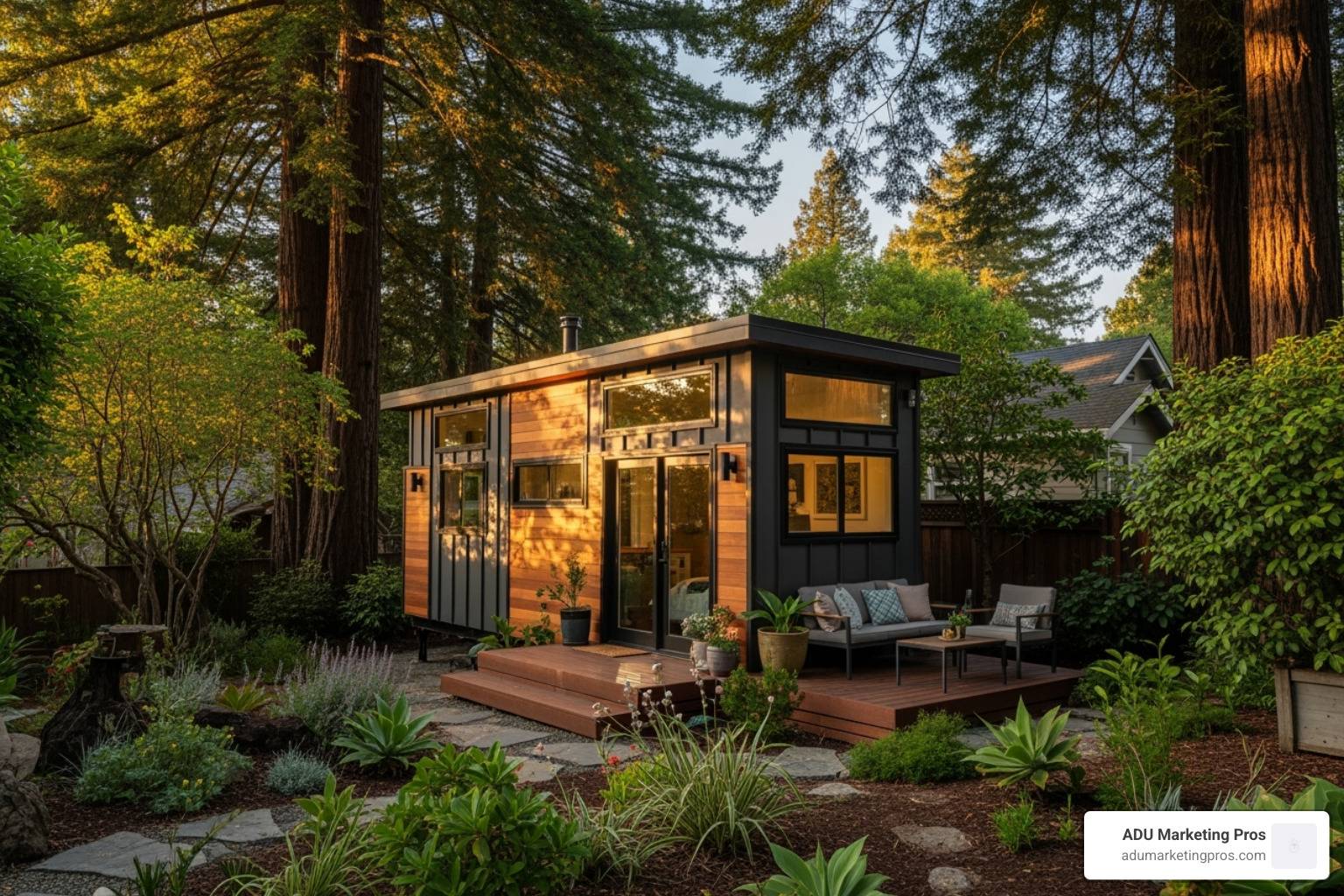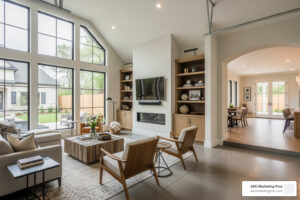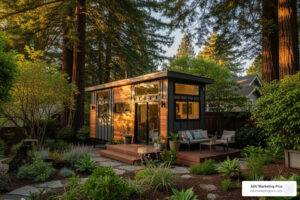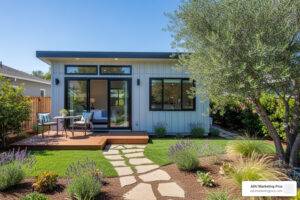Navigating the Tiny Home Landscape in the SF Bay Area
The San Francisco Bay Area is known for many things: stunning landscapes, technological innovation, and, let’s be honest, a notoriously high cost of living. The relentless housing crisis has pushed residents to seek creative, sustainable, and financially viable alternatives to traditional homeownership. For homeowners looking to maximize their property’s potential, reduce living expenses, or embrace a minimalist lifestyle, the growing community of tiny house builders in sf bay area offers a smart, practical solution.
These small-footprint dwellings, whether built as a permanent Accessory Dwelling Unit (ADU) or a movable tiny home on wheels (THOW), are transforming backyards from San Jose to Santa Rosa. If you’re seeking local builders to guide your tiny home project, here are some of the key players you’ll encounter, each bringing a unique strength to the table:
- Alameda Tiny Homes: Known as a dedicated local ADU builder, they focus on creating functional and compliant secondary units within existing properties, making them experts in navigating city-specific regulations.
- California Tiny House: With a decade of experience, they are pioneers in the field, building beautiful custom tiny homes. They are also deeply involved in policy advocacy, helping to shape the laws that make tiny living more accessible across the state.
- Pacifica Tiny Homes: Specializing in charming and efficient tiny homes on wheels, this builder offers distinct models like the coastal-inspired Bay Cottage and the classic Tiny Victorian, providing stylish and often more affordable options.
- ADU Builders Bay Area: This firm offers a comprehensive suite of services, building custom tiny homes and ADUs from the ground up, including complex garage conversions. They provide clear price points per square foot, helping clients understand budget expectations early on.
- RiseCon North America: Serving the South Bay hubs of San Jose and Sunnyvale, RiseCon focuses on full-build custom ADUs, emphasizing a streamlined, tech-enabled construction process designed to minimize homeowner stress.
In the Bay Area, where every square foot is precious, tiny homes and ADUs have become a powerful tool for gaining financial freedom, shrinking one’s environmental footprint, and adding invaluable flexible living space. Whether you’re dreaming of a backyard cottage for aging parents, a rental unit for supplemental income, or a quiet, dedicated home office away from the main house, these small structures offer big possibilities.

Why Choose Local: The Advantages of Bay Area-Based Builders
When you’re dreaming up your tiny home or ADU project in the San Francisco Bay Area, the decision to partner with local tiny house builders in sf bay area is one of the most strategic moves you can make. While national brands may seem appealing, local builders bring an irreplaceable wealth of on-the-ground knowledge that can make your project not just successful, but exceptional.
One of the biggest perks is their intimate understanding of the Bay Area’s diverse geography. Our region is a complex patchwork of microclimates and unique municipal codes. A builder based in foggy Daly City will recommend different siding, window seals, and ventilation systems than one working in the sun-drenched inland valleys of Livermore or Concord. They know which materials will stand up to corrosive salt air on the coast, intense sun in the East Bay, and the Bay Area’s infamous seismic considerations. This expertise ensures your home is not only beautiful but also durable and perfectly adapted to its environment.
Bay Area properties are notoriously quirky, with steep hillsides in Berkeley, narrow lots in San Francisco, and expansive clay soil in the South Bay. Local builders have tackled these site-specific challenges countless times. Their experience means they can devise clever solutions for building on a challenging lot, maximizing views, and ensuring proper drainage and foundation work, all while meeting every local setback and height requirement. This preemptive problem-solving can save you from thousands of dollars in unexpected costs and months of delays.
Choosing local also means you are directly supporting our Bay Area community and economy. Your investment helps create and sustain local jobs, from the architects and project managers to the carpenters and electricians. Furthermore, local builders have cultivated strong, long-term relationships with area suppliers, which often translates to more reliable service, priority scheduling, and access to high-quality materials at fair prices.
Finally, a local builder offers the invaluable benefit of streamlined communication and project management. Proximity matters. Being able to meet your project manager on-site with just a few hours’ notice to resolve a design question or review progress builds trust and ensures your vision is being executed precisely. This hands-on collaboration is difficult to replicate with an out-of-state company. At ADU Marketing Pros, we specialize in connecting homeowners with these trusted local professionals who know your neighborhood. For a deeper dive into statewide regulations that local builders master, you can always check the official resources from the California Department of Housing and Community Development – ADU Resources.
How to Select the Right Tiny Home Builder in the Bay Area
Choosing the right tiny house builders in sf bay area is the most critical decision you’ll make in your journey. This partnership will define your entire experience, from the initial sketches to the final walkthrough. You need a team that not only understands your vision but also possesses the proven expertise to bring it to life smoothly, on time, and on budget.

First, review builder portfolios and past projects with a critical eye. A portfolio is a window into a builder’s capabilities, craftsmanship, and aesthetic. Don’t just glance at the finished photos; examine the details. Are the joints clean? Does the material choice seem thoughtful and durable? Do the layouts feel clever and spacious or cramped and generic? Companies like California Tiny House and ADU Builders Bay Area showcase diverse projects, from rustic custom homes to sleek modern ADUs and garage conversions, giving you a clear sense of their range and quality.
Next, read client testimonials and reviews. Go beyond the curated testimonials on the builder’s website. Look for independent reviews on platforms like Houzz, Yelp, or Google Reviews to get a more balanced picture. Look for consistent praise regarding clear communication, transparency in billing, adherence to budgets and timelines, and overall client satisfaction. A pattern of positive feedback is a strong indicator of a professional and reliable operation.
A crucial, non-negotiable step is to verify licenses, insurance, and local experience. Hiring an unlicensed contractor is a massive risk that leaves you with no legal recourse if the work is subpar or they abandon the project. Ensure your chosen builder holds a valid, active license in California by using the California Contractors State License Board – Check a License website. Confirm they carry both general liability insurance and workers’ compensation. Also, press them on their specific experience in your city or county, as zoning ordinances and permitting processes can vary dramatically between, for example, Oakland and Palo Alto.
Pay close attention to their communication style from your very first interaction. Assessing process transparency and communication is key to a low-stress build. A great builder is responsive, answers questions patiently and thoroughly, and offers a clear, step-by-step process. They should make you feel like a partner, not a nuisance.
Finally, evaluate their customization capabilities. If you dream of a one-of-a-kind dwelling, you need a builder who excels at bespoke creations. Discuss your specific needs upfront—whether it’s a unique layout to accommodate a hobby, special materials for sustainability, smart home integrations, or accessibility features for aging in place—to ensure they have the skill and enthusiasm to deliver your dream home.
Here are five essential questions to ask any potential builder:
- How many tiny homes or ADUs have you completed in the SF Bay Area, and can you show me examples specifically in my city or county?
- What is your typical project timeline, from initial design and permitting to final move-in, and what are the common causes of delays?
- How do you manage the entire permitting process, and what is your strategy for dealing with unexpected requests from local planning departments?
- Can you provide a detailed breakdown of what’s included in your standard build package versus what constitutes an upgrade? What are the most common upgrade costs?
- Can you provide references from at least three recent clients with projects similar in scope and style to mine?
By carefully vetting your options with this framework, you’ll find a team that aligns perfectly with your goals and values.
Understanding Costs and Timelines for Bay Area Tiny Homes
When considering a tiny home in the Bay Area, the conversation inevitably turns to cost. While tiny house builders in sf bay area offer solutions that are significantly more affordable than a traditional single-family home, it’s vital to have a realistic understanding of the key cost drivers and typical timelines to plan effectively.
Key Cost Factors
Several interconnected elements impact the final price tag of your tiny home or ADU. Beyond the obvious factor of size (square footage), the quality and type of materials and finishes are a major driver; custom cabinetry, high-end appliances, and premium flooring will cost more than standard options. Site preparation can be a significant variable; a flat, easily accessible lot will be far less expensive to prep than a sloped lot in the hills that requires extensive grading, soil testing, or a complex foundation. Permitting and fees vary widely by municipality and can be a surprisingly large budget item, encompassing plan check fees, building permit fees, and sometimes hefty school, park, or traffic impact fees. Finally, utility hookups (water, sewer, electricity, gas) can escalate in cost if the connection points are far from the main house, requiring extensive and disruptive trenching.
What You Can Expect to Pay
According to influential research from UC Berkeley’s Terner Center for Housing Innovation, the median construction cost for an ADU in California is around $250 per square foot, but projects in the high-cost Bay Area are often significantly higher. Local builders may quote projects anywhere from $416 per square foot for a 400-square-foot unit up to $462 per square foot for a smaller 250-square-foot build. This inverse relationship is common, as the per-square-foot cost increases as the overall size decreases due to fixed expenses like kitchens, bathrooms, and permit fees being spread over a smaller area. For those seeking a more budget-friendly entry point, tiny homes on wheels (which typically don’t involve foundation or extensive site work) can start more affordably, with some models available around $47,900.
Financing Your Dream
Traditional mortgages are generally not available for tiny homes, but a variety of excellent financing options exist. Personal loans can be a good fit for smaller projects or for those with strong credit. Home equity loans or lines of credit (HELOCs) are often the most popular and cost-effective choice for existing homeowners, allowing you to borrow against your property’s value at a competitive interest rate. ADU-specific construction loans are also becoming more common as lenders recognize the growing market; these function like traditional construction loans with a draw schedule. Many experienced builders also have established financing partnerships with local credit unions and banks who understand these unique projects and can streamline the lending process.
Timeline Reality Check
Patience is a virtue in any construction project. The design and planning phase typically takes 1-3 months. The permitting phase is often the longest and most unpredictable stage, lasting anywhere from 2-6 months or even longer in some jurisdictions. Once permits are in hand, the on-site construction phase typically takes 3-8 months, depending on complexity, weather, and inspection schedules.
Here are some general, all-in timeline and cost estimates to set expectations:
- 250 sq ft Studio: $100,000 – $150,000; 8-14 months from initial consultation to move-in.
- 400 sq ft 1-Bedroom: $150,000 – $200,000; 9-16 months from start to finish.
- 750 sq ft 2-Bedroom: $250,000 – $350,000; 10-18 months from start to finish.
These are starting points for standard builds; extensive customization and significant site challenges can increase both costs and timelines. For more in-depth data, the UC Berkeley research on ADU costs provides invaluable statewide data. Working with a builder who provides a transparent, detailed budget is essential for financial peace of mind.
Meet the Top Tiny Home Builders in the SF Bay Area
The San Francisco Bay Area is home to a diverse and talented array of tiny house builders in sf bay area, each with their own unique specialties and business models. Understanding these different approaches can help you find a builder that aligns perfectly with your budget, timeline, and vision. Whether you’re dreaming of a bespoke architectural marvel or a cost-effective backyard solution, there’s a builder out there for you.
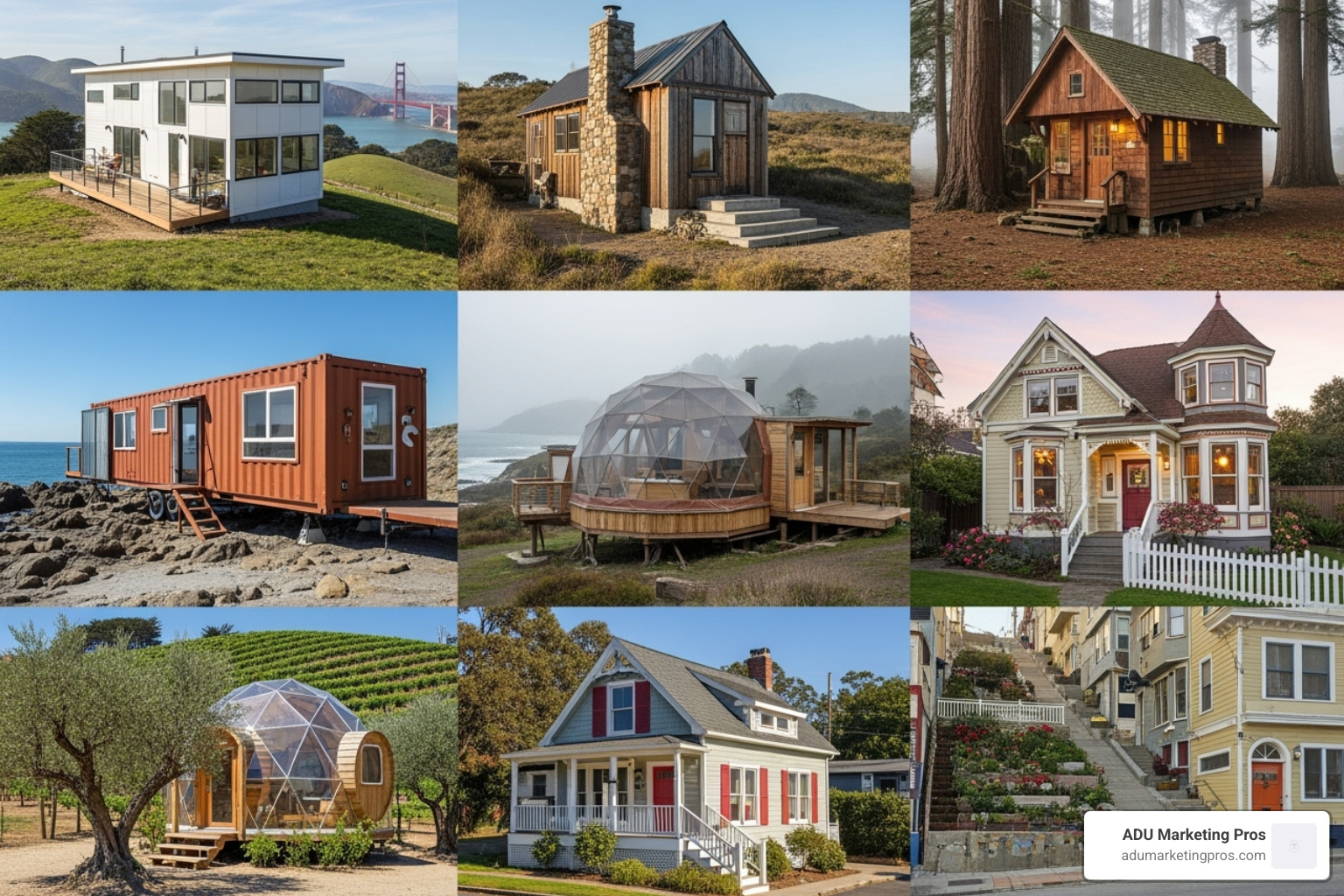
Full-Service Design-Build Specialists
For a seamless, low-stress process, full-service design-build firms offer true end-to-end project management. These companies handle every single detail, from the initial site analysis and conceptual design to navigating the labyrinth of permits and managing all phases of construction. With in-house design teams working alongside construction managers, they create a highly integrated and streamlined workflow. This model is ideal for clients seeking a hands-off experience and a single point of contact and accountability. Companies like ADU Builders Bay Area and RiseCon North America exemplify this approach, acting as your sole partner from dream to doorstep. The primary trade-off can sometimes be a higher price point to cover the comprehensive management, but for many, the peace of mind is well worth the investment.
Customization Experts for Unique Tiny Homes
If your vision is truly one-of-a-kind and you refuse to settle for a cookie-cutter design, you’ll want to work with builders who specialize in bespoke designs. These are true craftspeople who thrive on deep client collaboration to create a home that is a perfect reflection of your personality and lifestyle. They are adept at sourcing unique materials and integrating innovative features like custom millwork, moving walls, off-grid systems, or high-end smart home amenities. California Tiny House has built its reputation on creating these highly personalized tiny homes that push the boundaries of small-space living. This path requires more client involvement, especially during the design phase, but the reward is a truly personalized result that is unmatched by pre-designed models.
Affordable Tiny Home Solutions in the Bay Area
For homeowners whose primary drivers are budget and speed, there are builders focused on affordability. These companies achieve cost efficiency through the use of pre-designed or modular models and a highly streamlined build process. By limiting customization and optimizing their construction methods, they can offer faster completion times and more predictable, transparent pricing. Pacifica Tiny Homes is a great example, offering attractive models like the Bay Cottage starting at a very accessible price point. They provide clear options for both permanent and movable tiny homes and offer expert guidance on achieving local compliance, making them a fantastic choice for first-time tiny homeowners or those on a tighter budget.
ADU & Garage Conversion Specialists
This category of builders focuses on maximizing existing property value by transforming underutilized spaces—most commonly garages—into fully legal and functional living units. They possess a highly specific expertise in the structural modifications, fire-safety regulations, and building codes required for changing a non-habitable space into a legal living unit. These specialists, including firms like Alameda Tiny Homes, excel at adding bathrooms, kitchens, and proper egress, all while navigating the Bay Area-specific ADU regulations for both attached and detached ADUs. They are masters of unlocking the hidden potential already present on your property.
The Tiny Home Building Process: From Dream to Doorstep
Building a tiny home or ADU in the Bay Area is an exciting, multi-stage adventure. Understanding the journey ahead can demystify the process, making you feel more confident and prepared to partner with your builder. While every project is unique, the general steps typically follow a clear path from a simple idea to a fully realized, move-in-ready living space.
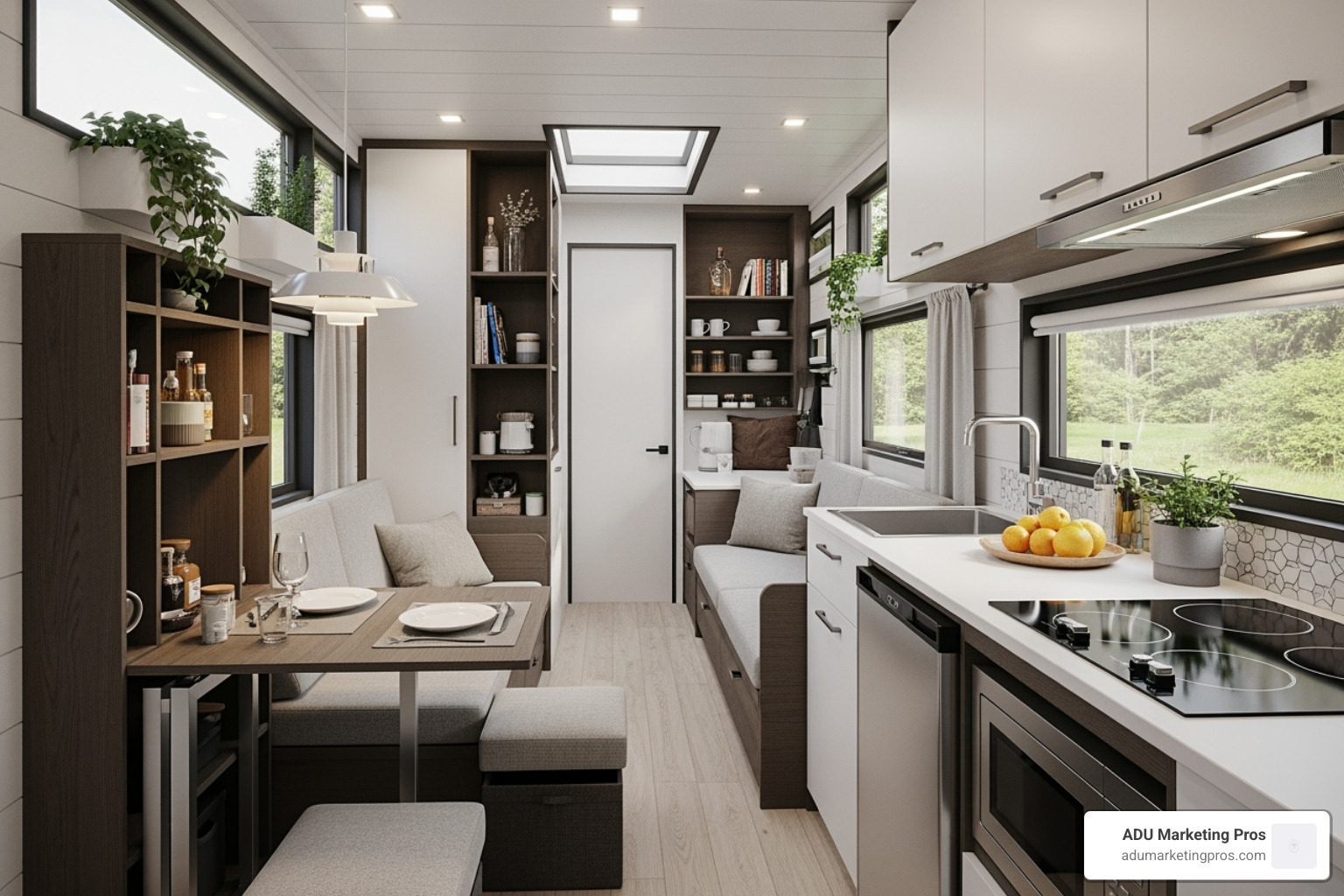
The process kicks off with an Initial Consultation and Needs Assessment. Here, you’ll discuss your vision, lifestyle needs, budget, and desired timeline with potential builders. This is your chance to see if the chemistry is right. It’s followed by a thorough Site Analysis and Feasibility Study, where your chosen builder evaluates your property for zoning compliance, setbacks, utility access, and any potential construction challenges.
Then comes the creative Design and Customization Phase. This is where your dream takes shape. You’ll work closely with the design team to perfect floor plans, select materials, and choose finishes, ensuring the home is a perfect fit for your lifestyle. Many tiny house builders in sf bay area use 3D modeling software to help you visualize the space. This is a dance of creativity and pragmatism, as your builder’s architect translates your wishes into buildable plans that meet all structural and safety codes.
Once the design is finalized and you’ve signed off, your builder takes the lead on Permitting and Approvals, preparing and submitting all necessary architectural plans and engineering documents to your local city or county planning department. With permits in hand, the Construction Stages and Quality Checks begin. This includes site preparation, foundation work, framing, roofing, utility rough-ins, insulation, and interior/exterior finishes, with regular inspections and quality checks to ensure the highest standards are met. The journey concludes with a Final Walkthrough and Move-in, where you and your builder inspect the completed work together, address any final punch-list items, and you finally get the keys to your new home.
Key Features Offered by Bay Area Tiny Home Builders
Tiny house builders in sf bay area are masters of ingenuity, making the most of every square inch. Common features they offer include:
- Space-saving design: Expect multi-functional layouts with clever solutions like Murphy beds that fold into walls, built-in storage under stairs, convertible furniture, and pocket doors to maximize usable floor space.
- Sustainable building: Many builders prioritize eco-friendly practices, offering energy-efficient appliances, reclaimed or sustainably sourced wood, bamboo flooring, recycled denim insulation, low-VOC paints, and high-efficiency mini-split HVAC systems to reduce your environmental footprint and utility bills.
- Smart home integration: For tech-savvy Bay Area clients, builders can integrate intelligent lighting, thermostats (like Nest or Ecobee), security systems, and automated blinds, all controllable from your smartphone for ultimate convenience and efficiency.
- Premium finishes and outdoor spaces: Small doesn’t mean sacrificing luxury. Builders can incorporate high-end kitchens with quartz countertops, luxurious spa-like bathrooms with designer tile, and seamless connections to outdoor spaces like decks or patios to extend your living area into the beautiful California climate.
Navigating Bay Area Regulations and Permits
A professional builder is your indispensable guide through the maze of local regulations. They understand the nuances of state-mandated ADU laws and local tiny home rules, including city-specific zoning requirements, setbacks, height restrictions, and parking exemptions. For example, they’ll know that San Jose offers pre-approved ADU plans to fast-track permitting, while building in a historic district in San Francisco requires a much more rigorous design review. They also manage the critical foundation and utility requirements, coordinating with structural engineers and local utility districts to ensure everything is safe, compliant, and built to last. These builders stay current on constantly evolving legislation to ensure your project remains compliant from start to finish, avoiding costly delays and future legal headaches.
Frequently Asked Questions about Bay Area Tiny Homes
Embarking on a tiny home project in the Bay Area naturally brings up a lot of questions. The legal landscape, terminology, and financing can seem complex. Let’s tackle some of the most common queries we hear from homeowners to provide some clarity.
Can you permanently live in a tiny home in the Bay Area?
Yes, absolutely—but the legal status is key. If you’re working with tiny house builders in sf bay area to design and construct a permitted Accessory Dwelling Unit (ADU) on a permanent foundation, it is a fully legal dwelling. You can live in it full-time, rent it out long-term, or house family members in it. These units are built to meet all local and state building codes, just like a traditional house, ensuring they are safe, habitable, and a legal addition to your property.
The situation is more complex for tiny homes on wheels (THOWs). These are often legally classified as Recreational Vehicles (RVs). Rules for long-term residency in an RV vary significantly by city and county. Some progressive communities are creating programs to allow THOWs as primary residences in designated parks or even on residential lots, but many others have strict prohibitions against living in an RV outside of a licensed mobile home park. Always check directly with your local planning department before assuming you can live in a THOW on your property.
What’s the difference between an ADU and a tiny house?
The terms are often used interchangeably in casual conversation, but in a legal and building context, the distinction is critical. A tiny house is a descriptive term for a small home, typically under 500 square feet. It’s a design and lifestyle choice focused on minimalism and efficiency. A tiny house can be built on a permanent foundation or on a wheeled trailer (a THOW).
An Accessory Dwelling Unit (ADU), on the other hand, is a legal and zoning designation for a secondary housing unit on a single-family residential lot. ADUs are always built on a permanent foundation and must be fully permitted and compliant with local building codes. Therefore, a tiny house built on a foundation can be permitted as an ADU, but not all tiny houses (especially mobile ones) qualify as legal ADUs.
How can I finance a tiny home build?
Financing a tiny home or ADU requires a bit more creativity than securing a traditional mortgage, but several solid options are available:
- Home Equity Loan or HELOC: For existing homeowners, this is often the best option. You borrow against the equity in your main home, usually securing the lowest interest rates.
- Construction Loan: Some lenders, particularly local credit unions, offer construction loans specifically for ADU projects. These loans typically pay out to your builder in stages (draws) as construction milestones are met.
- Renovation Loan: A loan like the FHA 203(k) loan allows you to roll the cost of building an ADU into the refinancing of your primary mortgage.
- Personal Loans: For smaller projects or for those with excellent credit, an unsecured personal loan can provide quick funding, though often at a higher interest rate.
- RV Loans: This option is only available for certified THOWs from an approved manufacturer. The rates and terms are similar to a car loan.
Many experienced tiny house builders in sf bay area have established relationships with lenders who specialize in this type of financing and can guide you to the best option for your situation.
Do I have to pay more property taxes on a tiny home?
Yes, if you build a permanent ADU. The construction of a new, permitted dwelling on your property will trigger a reassessment of your property value by the county assessor’s office. However, it’s not a reassessment of your entire property. Your existing home’s value will remain protected under Prop 13. Only the value of the newly added ADU will be added to your property tax bill. For a tiny home on wheels (THOW) classified as an RV, you will not pay property tax. Instead, you will pay an annual registration fee to the California DMV, similar to a car or travel trailer.
Where can I legally park a Tiny Home on Wheels (THOW) in the Bay Area?
This is one of the biggest challenges for THOW owners. The rules are a patchwork that varies by jurisdiction. Generally, your options include: designated RV parks that allow long-term stays; a friend or family member’s private property in a rural county with lax enforcement (a legal gray area); or a city with a progressive program. Cities like Fresno, San Jose, and San Luis Obispo have passed ordinances making it easier to legally live in a THOW in a backyard, but this is not yet the norm across the Bay Area. It is absolutely critical to research the specific ordinances for the city where you intend to park before you build or buy a THOW.
Conclusion: Start Your Bay Area Tiny Living Journey
Your tiny home adventure in the San Francisco Bay Area is more than just a creative housing solution—it’s a powerful lifestyle choice that makes perfect sense in our unique and challenging region. Throughout this guide, we’ve explored how partnering with the right tiny house builders in sf bay area can unlock a future with greater financial freedom, a significantly reduced environmental footprint, and the invaluable gift of flexible living space for your family, your work, or your financial goals.
The single most important key to success is working with a trustworthy, local, and experienced builder. They are your essential partners in navigating the complex maze of Bay Area regulations, from the foggy coast of San Mateo County to the sunny hills of Contra Costa County. They possess the on-the-ground knowledge to transform your vision into a physical reality that is not only beautiful and functional but also safe, durable, and fully compliant.
The local builders we’ve highlighted bring an invaluable peace of mind that comes from proven experience. They have walked this path hundreds of times before and will be your expert guide through every step of the process, from the first sketch to the final, joyful turn of the key.
At ADU Marketing Pros, we understand that sifting through builders to find the perfect one can be overwhelming. That’s why we exist. We do the exhaustive research so you don’t have to, connecting Bay Area homeowners with a curated network of vetted, high-quality professionals who prioritize craftsmanship, transparency, and client satisfaction. We verify licenses, check references, and assess portfolios to ensure you partner with a builder who will deliver exceptional results.
Ready to stop dreaming and start building? Take the next step and turn your tiny home aspirations into reality. Find more about the exciting possibilities waiting for you by exploring the Tiny House scene in San Francisco with ADU Marketing Pros. Your journey to a simpler, smarter, and more sustainable way of living starts with a single click.

